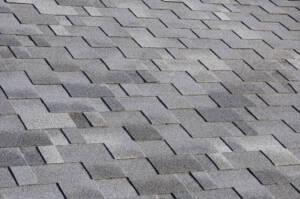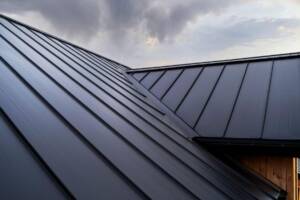Q
How to Upgrade Your Old House Roof: A Step-by-Step Guide
Upgrading the roof of an older home is one of the most crucial investments you can make to improve its durability, energy efficiency, and overall value. Whether you’re dealing with leaks, old shingles, or just looking to enhance curb appeal, a roof upgrade ensures your home is better protected from the elements and ready for many more years of service. Here’s how you can approach upgrading your old house roof step by step.
1. Evaluate the Current Condition of Your Roof
Before diving into any roofing project, you need to assess the current state of your roof. Look for signs of wear and tear, such as:
- Missing or curling shingles
- Leaks or water damage in the attic or ceilings
- Sagging areas on the roof deck
- Mold, moss, or algae growth
- Damaged flashing or chimney areas
Hire a professional roofing contractor to perform a thorough inspection if needed. This step helps you determine whether you need a simple repair, a partial re-roof, or a complete replacement.
2. Decide on the Right Roofing Material
When upgrading an old roof, the choice of roofing material can significantly impact both the performance and appearance of your home. Here are some common roofing materials and their benefits:
- Asphalt Shingles: Affordable and widely used, asphalt shingles come in various colors and styles. They are relatively easy to install and offer good weather resistance.
- Metal Roofing: Highly durable and energy-efficient, metal roofing can last up to 50 years or more. It’s especially suitable for regions with heavy snowfall or extreme weather.
- Clay or Concrete Tiles: These offer a distinctive look and excellent longevity, but they’re heavy and may require extra structural support.
- Wood Shakes or Shingles: Known for their natural beauty, wood roofing provides good insulation but requires regular maintenance to prevent rot and insect damage.
- Slate Roofing: Slate is a premium roofing material known for its elegant look and extreme durability, often lasting over a century. However, it’s also one of the most expensive options.
3. Improve Roof Ventilation
Upgrading your roof isn’t just about choosing the right materials. Proper ventilation is essential for the long-term health of your roof and the energy efficiency of your home. Without proper ventilation, heat and moisture can build up in your attic, leading to mold, roof rot, and higher energy bills. Consider installing ridge vents, soffit vents, or other ventilation systems during the upgrade to ensure proper airflow.
4. Consider Installing a FORTIFIED Roof
If you live in an area prone to severe weather conditions, such as high winds, hurricanes, or heavy snowfall, upgrading to a FORTIFIED Roof is a smart move. A FORTIFIED Roof is designed and certified to withstand harsh weather, reducing the risk of wind-related damage. It involves reinforcing key areas of your roof structure and using stronger, wind-resistant materials.
The FORTIFIED Roof system is certified by the Insurance Institute for Business and Home Safety (IBHS) and can also lead to insurance savings, providing both peace of mind and financial benefits.


5. Upgrade Your Insulation
While upgrading your roof, take the opportunity to improve your home’s insulation. Poor insulation can lead to higher energy bills and discomfort, as heat escapes in the winter and enters in the summer. Adding insulation under the roof or in the attic can drastically improve your home’s energy efficiency, making it more comfortable and reducing energy costs.
6. Add a Roof Deck Protection Layer
A roof deck protection layer is an additional material that goes between the roof deck (the base of the roof) and the shingles. This layer helps prevent water infiltration in case your shingles are damaged or compromised. It’s particularly useful in areas with heavy rain or snow, providing an extra layer of protection for your home.
7. Upgrade Your Gutters
When upgrading your roof, don’t forget to address your gutters and drainage system. Clogged or damaged gutters can cause water to back up and damage your roof, siding, or foundation. Consider installing wider gutters, leaf guards, or downspouts that effectively direct water away from your home.
8. Choose a Reputable Roofing Contractor
A successful roof upgrade depends heavily on the quality of workmanship. Choose a licensed, insured, and reputable roofing contractor with experience in upgrading older homes. Get multiple quotes, check references, and ensure that the contractor is familiar with local building codes and roofing materials.
9. Consider Aesthetic Upgrades
While durability is a priority, don’t overlook the aesthetic value of your new roof. Choose a roofing material and color that complements your home’s architectural style. A new roof can dramatically enhance the curb appeal and market value of your property, so take the time to explore design options.
10. Plan for Maintenance
Once your roof is upgraded, ongoing maintenance is key to extending its lifespan. Schedule regular inspections, clean your gutters, and address minor repairs before they become major issues. By keeping up with maintenance, you can ensure your roof lasts as long as possible and performs at its best.
Conclusion
Upgrading the roof of your old house is a significant project that can increase your home’s value, energy efficiency, and durability. By evaluating the condition of your current roof, choosing the right materials, improving ventilation and insulation, and working with a skilled contractor, you can make sure your roof is ready to protect your home for years to come.
If you’re considering a roof upgrade, whether for aesthetic appeal or improved weather resistance, follow these steps to ensure your investment pays off in both comfort and security.

PR 360 Construction, Inc. Stands Behind Their Work, So You Can Stand Under It.




